Ayodhya, a city in the northern Indian state of Uttar Pradesh, holds immense significance in Hindu mythology and history. Revered as the birthplace of Lord Rama, it’s a pilgrimage site for millions of devotees. As a prominent pilgrimage site for Hindus, it boasts a plethora of temples, sacred sites, and cultural landmarks. The city has been a focal point of Hindu-Muslim tensions due to the disputed site of the Babri Masjid, a mosque built in the 16th century, which was demolished in 1992. The Supreme Court of India ruled in 2019 that the site should be handed over to Hindus for the construction of a temple, leading to renewed focus on Ayodhya’s cultural and religious importance
History and the Legal Battles:
After years of legal battles and communal tensions, the Supreme Court of India ruled in November 2019 that the disputed land should be given to Hindus for the construction of a temple, while also granting an alternative plot of land to Muslims for the construction of a mosque.
Following the court’s verdict, the construction of the Ram Mandir began in August 2020, with Prime Minister Narendra Modi laying the foundation stone. The temple’s design incorporates traditional Indian architectural styles and is expected to become a major pilgrimage site for Hindus worldwide once completed. The Ram Mandir symbolizes not only the faith and devotion of millions of Hindus but also a significant moment in India’s cultural and religious history
The city’s economy is largely driven by tourism, with visitors coming to explore its temples, historical sites, and participate in religious ceremonies. Ayodhya holds a special place in the hearts of millions of Hindus worldwide, symbolizing devotion, faith, and the enduring legacy of ancient traditions.
Here’s a comprehensive guide to the captivating places to explore in Ayodhya:
Ram Janmabhoomi Temple:

This temple marks the spot where Lord Rama was believed to have been born. It’s the epicenter of religious fervor in Ayodhya and attracts pilgrims from all over the world.
The temple complex underwent significant renovations and transformations over the centuries, culminating in the construction of a grand temple dedicated to Lord Rama.
Hanuman Garhi:

Perched atop a hill, this temple dedicated to Lord Hanuman offers panoramic views of Ayodhya. Devotees climb the 76 steps to seek blessings and witness the magnificent sunset.
Kanak Bhawan:
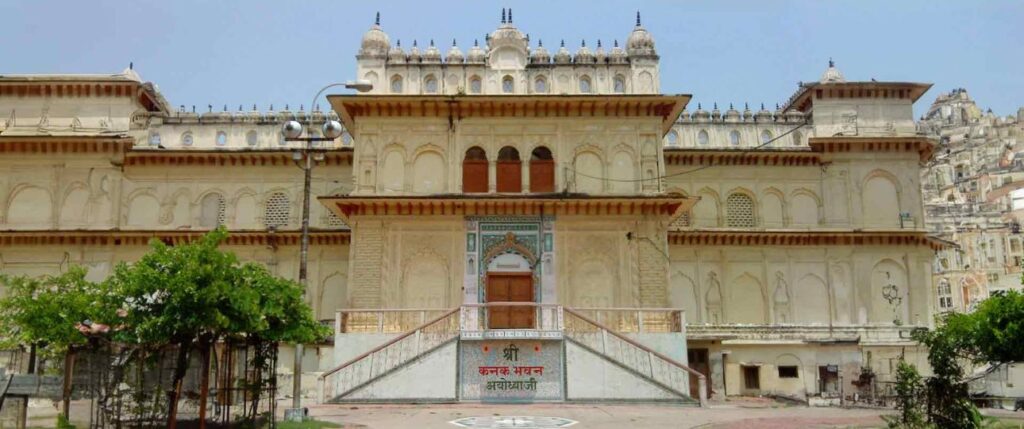
Also known as Sone-ka-Ghar, this temple is dedicated to Lord Rama and his consort Sita. Its stunning architecture and intricate carvings make it a must-visit attraction.
The temple is adorned with gold, attracts visitors seeking spiritual solace and architectural marvels.
Treta Ke Thakur:

This temple complex houses idols of Lord Rama, Sita, Lakshmana, and Hanuman. It’s believed to be the spot where Lord Rama performed the Ashwamedha Yagna after his return from exile.
Guptar Ghat:

Situated on the banks of the Sarayu River, this ghat holds historical and religious significance. It’s believed that Lord Rama took a dip here during his exile.
Tulsi Smarak Bhawan:

Dedicated to the renowned saint and poet Goswami Tulsidas, this museum showcases his life and works. It’s an insightful journey into the legacy of the author of the Ramcharitmanas.
Ramkatha Park:

This sprawling park is adorned with sculptures depicting scenes from the Ramayana. It’s a serene spot for leisurely walks and contemplation.
Valmiki Ramayan Bhawan:

Named after the sage Valmiki, author of the original Ramayana, this museum houses ancient manuscripts and artifacts related to the epic.
Gulab Bari:

Built by Nawab Shuja-ud-Daula in the 18th century, this garden complex houses a mosque, a mausoleum, and lush green gardens. It’s a tranquil retreat away from the hustle and bustle of the city.
Swarg Dwar:

According to Hindu mythology, this is the spot where Lord Rama ascended to heaven at the end of his earthly incarnation. It’s a place of immense spiritual significance for devotees.
Kala Ram Temple:

Dedicated to Lord Rama, this temple is known for its black stone idol of the deity. It’s believed to have been established by Queen Ahilyabai Holkar of Indore.
Dashrath Mahal:

Named after King Dasharatha, Lord Rama’s father, this palace is an architectural marvel with intricate carvings and stunning architecture.
Lakshman Ghat:

Another picturesque ghat on the banks of the Sarayu River, this spot is associated with Lord Rama’s younger brother, Lakshmana. It’s a serene place to witness the evening aarti and immerse in spiritual contemplation.
Ram Ki Paidi:
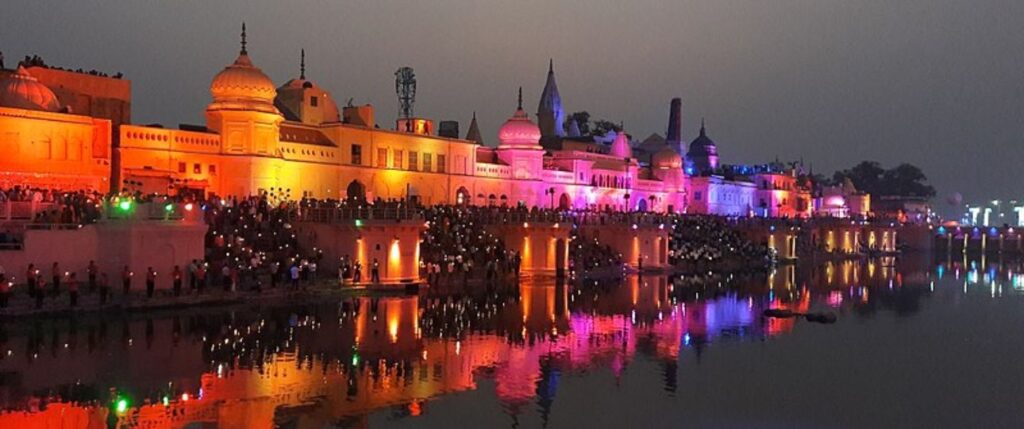
This riverside promenade is a popular spot for devotees to take a holy dip in the Sarayu River. It’s especially crowded during religious festivals and auspicious occasions.
Nandigram:
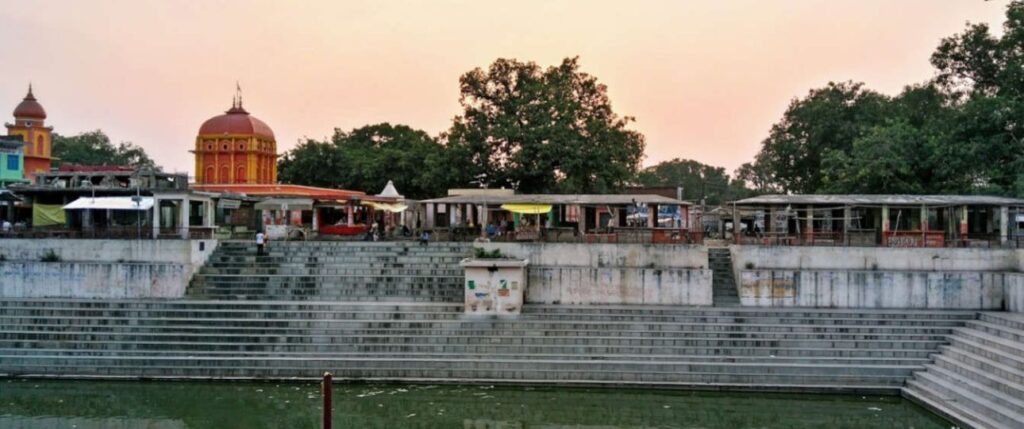
This village, located on the outskirts of Ayodhya, is believed to be the birthplace of Bharata, Lord Rama’s younger brother. It’s a serene spot surrounded by lush greenery and ancient temples.
Ram Katha Museum:

Located near the Ram Janmabhoomi Temple, this museum showcases artifacts, sculptures, and exhibits related to the Ramayana epic. It offers insights into the cultural and historical significance of Ayodhya.
Sita Ki Rasoi:
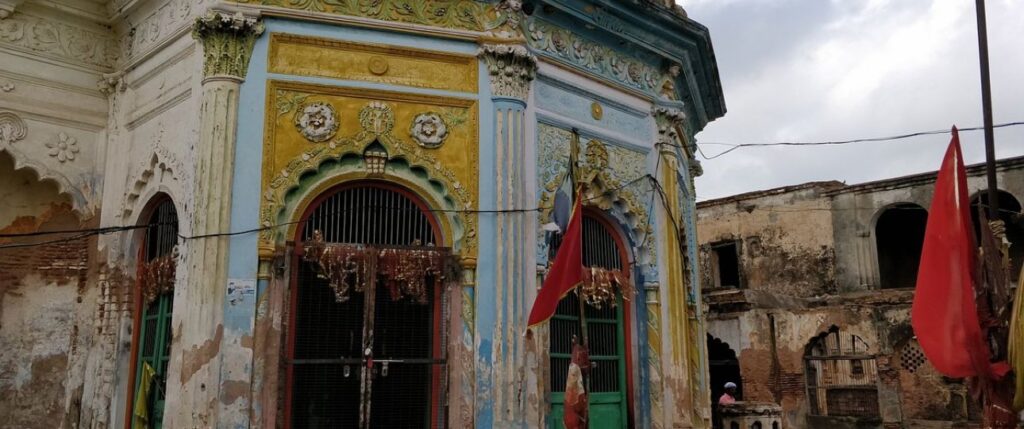
This temple complex is dedicated to Goddess Sita and is believed to be the spot where she cooked meals during her exile with Lord Rama. It’s a sacred place for devotees to seek blessings for marital harmony and domestic bliss.
Gurudwara Brahma Kund:

This Sikh shrine commemorates the visit of Guru Nanak Dev Ji, the founder of Sikhism, to Ayodhya.The gurudwara is built around the Brahma Kund, a sacred pond believed to have been created by Lord Brahma.
Chhoti Chhavani:
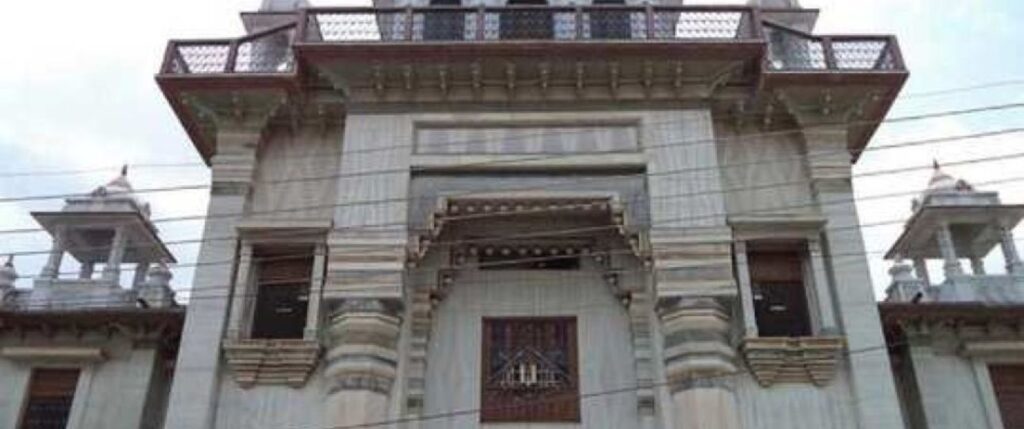
This historical site is associated with the annual celebrations of Lord Rama’s birth anniversary, known as Ram Navami. Pilgrims and tourists gather here to witness grand processions, religious ceremonies, and cultural performances.
Ayodhya Research Institute:

A hub of scholarly research and academic activities focused on Ayodhya’s history, culture, and religious significance. The institute houses a vast collection of manuscripts, artifacts, and publications related to Ayodhya’s heritage.
Shri Ram Mandir Trust Office:

Established to oversee the construction of the grand Ram Temple at the Ram Janmabhoomi site. Visitors can learn about the temple’s architectural plans, construction progress, and the significance of the project in Hindu culture.
Kausalya Bhawan:
Believed to be the palace of Queen Kausalya, Lord Rama’s mother, this historical site offers insights into the royal life during the time of the Ramayana. The architecture and artifacts preserved here provide a glimpse into ancient Ayodhya’s opulence.
Five Fascinating Ayodhya Ram Mandir Facts
- The Sompura family, who have designed temples for over fifteen generations, is the creators of the Ayodhya Ram Mandir.
- The materials used to build the Ram Mandir include only stones, copper, white cement, and wood. Its construction does not involve the use of steel or iron.
- The largest temple in India is the Ram Mandir, which is spread across 70 acres, with 70% of that area being greenery.
- The temple contains a 2000-foot-deep time capsule that contains information about the history of Ayodhya and the beginnings of Lord Rama.
- Each of the 27 distinct plant species in the temple’s constellation-based garden symbolizes one of the 27 nakshatras, or star constellations.
Conclusion
The history of Ayodhya Ram Mandir is convoluted, marked by disputes and setbacks. The construction of Ram Mandir signifies the resolution of an ongoing conflict. Traditional Hindu architecture is reflected in the Ram Mandir’s masterfully carved sandstone, which comprises domes, pillars, and engravings whispering tales of Rama’s trip. The temple is more than just a structure; it stands for perseverance, hope, and a way to achieve peace. As a result, the Ayodhya Ram Mandir is much more than just a structure; it is a significant symbol of spiritual values, cultural heritage, and unwavering faith.
Also, The Ayodhya Ram Mandir is a symbol of optimism that represents India’s capacity to settle complicated disputes amicably and amicably via discourse. In addition to its religious significance, the temple is a symbol of variety and unity. Building the Ram Mandir is a critical step in mending past grievances, promoting intergroup harmony, and enhancing the rich cultural heritage of the country. Ayodhya’s magnificent architecture contributes to the cultural and spiritual diversity of India, elevating it to the status of a symbol of harmony and legacy for future generations.
These are just a few of the enchanting places to visit in Ayodhya, each offering a unique blend of spirituality, history, and architectural grandeur. Over the years, Ayodhya has witnessed various restoration projects and development initiatives aimed at preserving its cultural heritage and enhancing its infrastructure to accommodate the influx of tourists. Additionally, efforts have been made to promote interfaith dialogue and foster harmony among the city’s diverse religious communities. Whether you’re a devout pilgrim or a curious traveler, Ayodhya promises an unforgettable journey through time and mythology.
FAQs
How many days are enough for Ayodhya?
You can enjoy the city’s best places in 1 to 2 days.
Do I need to register before Ayodhya Ram mandir Darshan?
Yes! There is a specific site where you can register online to get the slots available.




